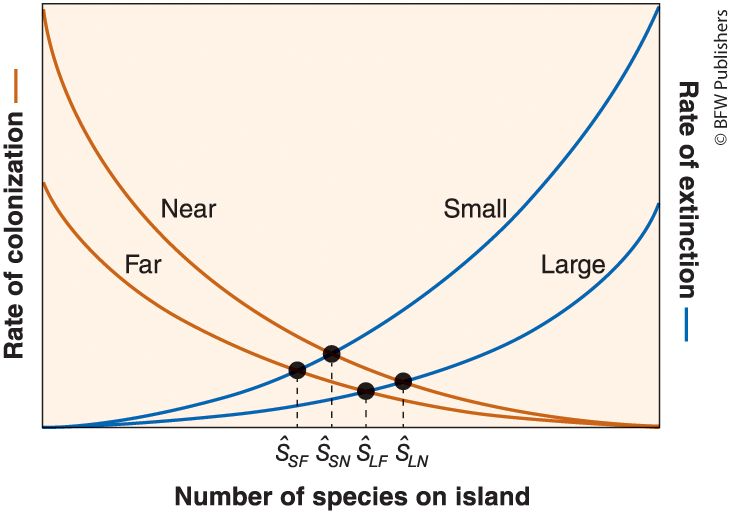APES Unit 2.3 Island Biogeography
1/7
There's no tags or description
Looks like no tags are added yet.
Name | Mastery | Learn | Test | Matching | Spaced |
|---|
No study sessions yet.
8 Terms
Describe how island biogeography affects which species live on islands.
Species Diversity increases as Island Area and Distance from Mainland increases
Some animals are capable of maintaining energy while traveling long distances
Island Biogeography
How species are distributed/interact on islands
Species-Area Curve: Larger Islands = More Species
Also seen by isolated terrestrial habitats
LogS = zLogA + logC
S = Species
A = Island Area
Z = positive Slope
Large Island:
More likely found by dispersing species from nearby mainland
Support more Individuals
Contain more varied biotic/abiotic conditions = Experimental Conditions + Opportunities for Evolution
Ecological Relationships and Size
Smaller Islands: Fewer Species → Predators extinct → Flourishing primary consumers → Higher producer mortality
Rates of Colonization and Extinction
Rate of Colonization Decreases w/ More Species: B/c fewer new species
Rate of Extinction Increases w/ More Species: More predation, competition, parasitism
Islands Near Mainland = Higher Rates of Colonization: More migration
Large Islands = Lower Rates of Extinction: Support more/larger populations and migration
Intersections: Species go extinct as much as species colonize (equilibrium)

Specialists and Invasive Species
Island species become specialists because: Isolation = Specific Conditions and Resources
→ Less Natural Threats and Interaction
→ Lose Adaptations
Optimizes Fitness
→ Increases vulnerability of invasive species/diseases/generalists introduced by humans
Patches
Have different abiotic factors
Perimeter/Surface Area
Edge Effect: windier, dryer, disease-ridden— more vulnerable due to not in the middle of nature
Monoculture
Habitat Fragmentation
Process of Large and Contiguous Habitats diving into smaller, isolated patches of habitats
Clear cutting, logging, highways, biking
Not all species thrive
natural selection
Habitat Corridors
Connect habitats to make them less fragmented
Maintain genetic diversity
Increase core area